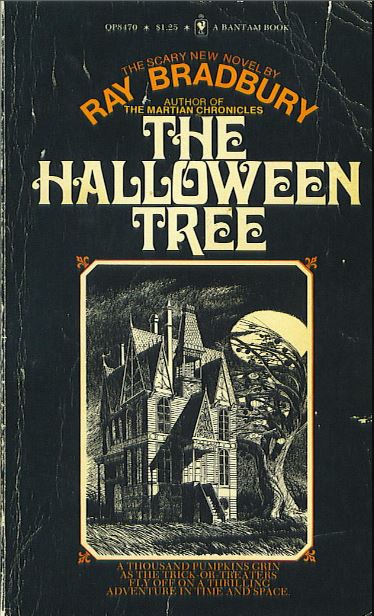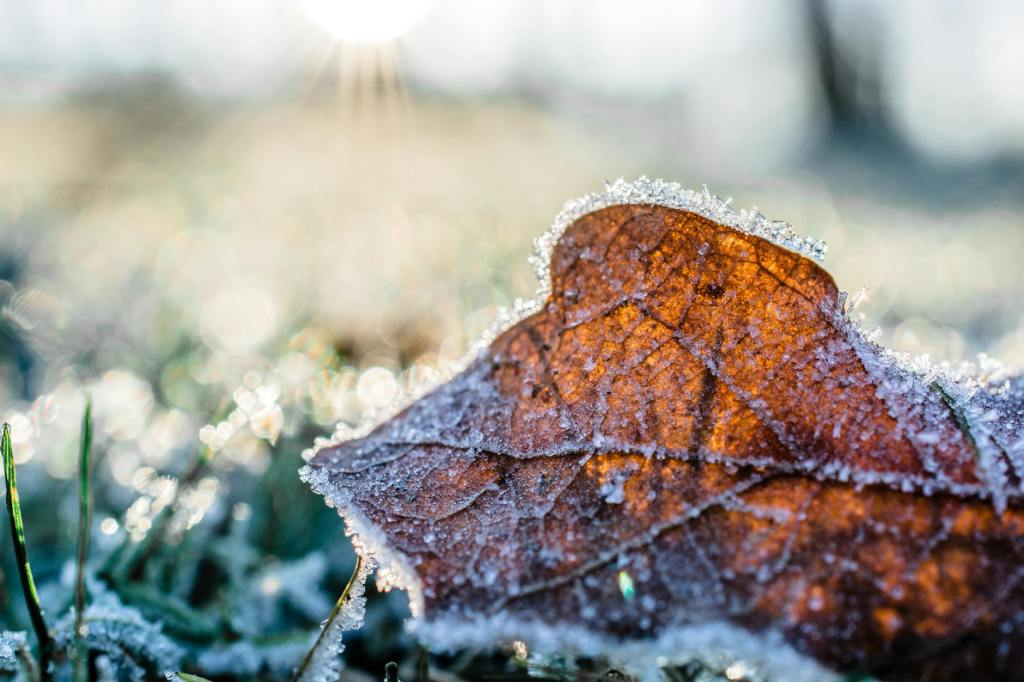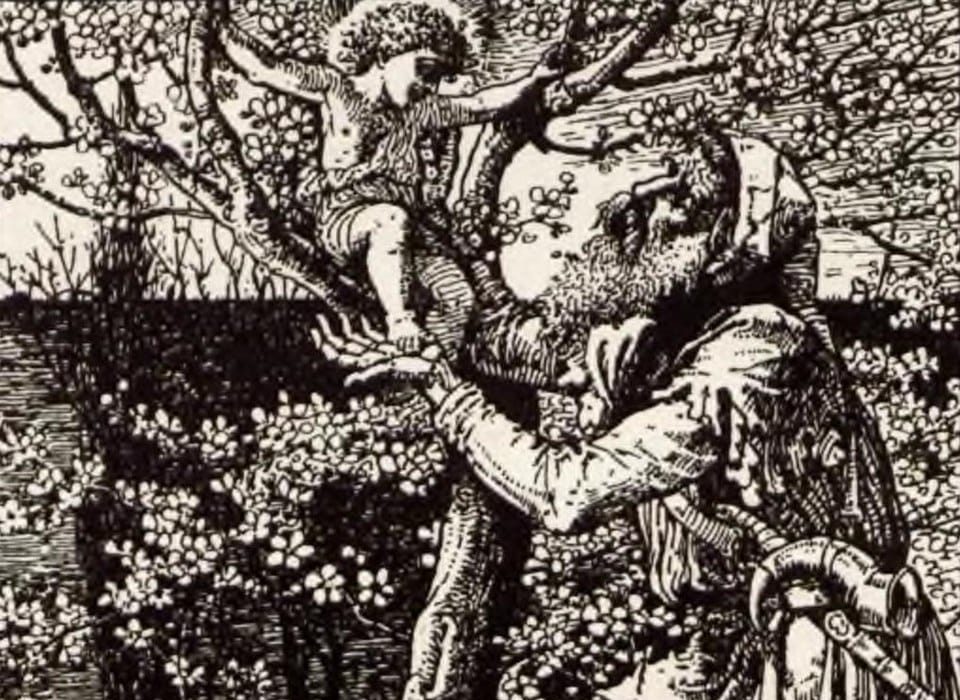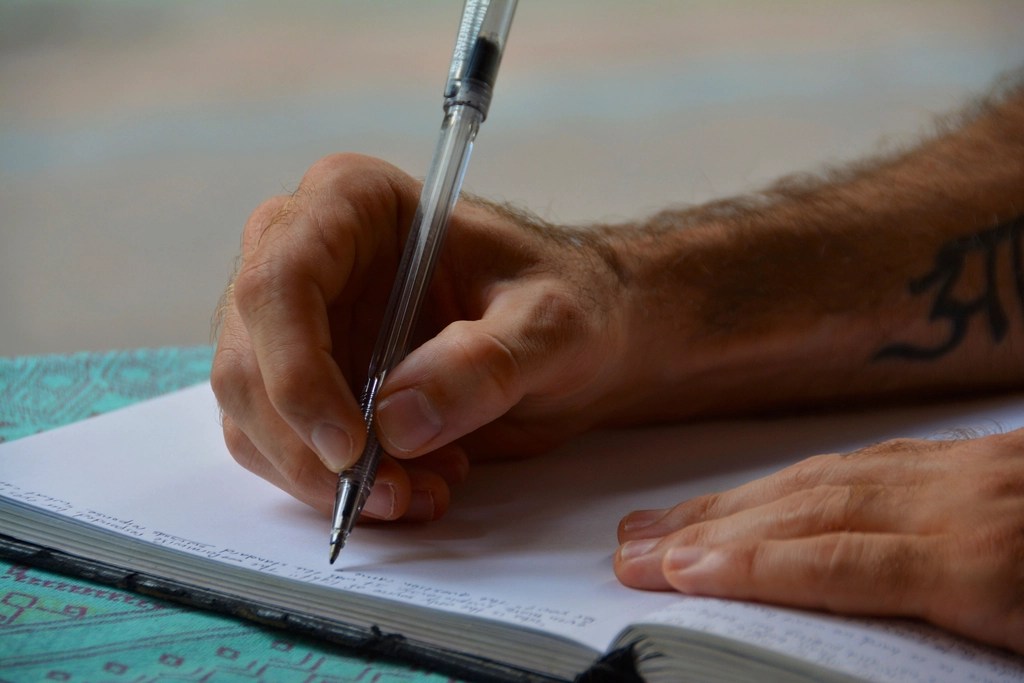We have talked a great deal about Ray Bradbury on this blog. We have discussed his stories, his style, and how the themes of his books have affected so many people. With that said, it can be hard to pinpoint the books we may deem as critical. I have my list. Yet, with such a wide catalogue, which books would you choose? Something Wicked this Way Comes for sure has staying power, as does Fahrenheit 451. Nevertheless, I may point to another book to put in the pantheon of the greats: The Halloween Tree. The novel is about a group of boys on Halloween night who venture through time and history. Joined by their guardian and guide, Mr. Moundshroud, they see many historical accounts of Samhain and early onset Halloween. In this post, we are going to look at the importance of Bradbury’s death-laden novel The Halloween Tree.
Summary
In the novel, a group of boys are taken on an adventure to save their sick friend. Throughout their adventure, they see different eras and civilizations. The purpose of this, according to their ghastly guide Mr. Moundshroud, is to show the boys the importance of Halloween. Of course, it is more than a holiday, they are told, and it is in fact a way of life. They go from the early days with Cro-Magnon men, to the Celtic rituals in the hills. They span it all across time. The story is dark and there are moments of sheer terror in cornfields and Notre Dame Cathedral. In the end, the boys learn about Halloween and must make a dark sacrifice to save their ailing friend.
The importance of The Halloween Tree
Ray Bradbury’s The Halloween Tree is a nostalgic novel. Not that Bradbury wrote the novel in 1972, but that it also has the vibes of early-Midwest Halloweens. The town in the story is inviting, and the trees are changing into beautiful blooms of color. The boys trod on broken, uneven sidewalks from house to house in the cool autumn night. It is a wistful story.
Likewise, the novel pulls you right in to imagining your younger self dressed up on a cold Halloween night. Even though you did not travel through history, you learned a great deal about what Halloween meant on those evenings. The joy, the excitement, and the satisfaction of dressing up as something else. At my current age, Halloween is a sort of curiosity, like folklore, that lives in our very being. It is a haunted day, but it is not haunted by ghosts and goblins. Rather, it is haunted by historical context and meaning.
The Halloween Tree cements this idea in every way.
Consider this: in the story, the boys only begin to understand the full context of Halloween night as they explore experiential settings. The performative stunts of dressing in costume become clearer as almost every boy is given an explanation for their dress-up choice: mummies, ghosts, and even ape-men. Regardless, the history lesson is just the icing on the cake. As this is a fabulous book about friendship, adventure, and the fear of death hiding in nearby shadows.
Similarly, The Halloween Tree reminded me that dark stories can have educational qualities. Yet they can still give us insight into the story’s characters. While the history of death and Halloween in the novel is fitting, it is also important to the overall thrust of the story and its themes. These themes are anything from childhood memories to the power of the afterlife.
The novel is a formative text about growing up on the most precious night of the year for a child. It is a bildungsroman piece about realizing that we are all in this together. This is exemplified by the boys’ willingness to give up a year of their life to save their friend Pipkin. It also exemplifies the tradition of Halloween as a night of fun, adventure, and camaraderie.
Conclusion
I love The Halloween Tree very much. Though I also feel like I missed out on it when I was younger. I recall watching the movie in an upstairs bedroom where my brothers and I slept on a single queen-sized mattress on the floor. We had an ancient television and a VCR player that poorly played any film put into its maw. At the time, I didn’t care for the film adaptation of The Halloween Tree (1993). I thought it looked cheesy and poorly done. But, I hadn’t hit a point in my life where I could see a film for more than what appeared on the screen superficially.
Moreover, The Halloween Tree is most reminiscent of Bradbury’s Something Wicked this Way Comes (1962 ). That novel is a dark fantasy story about two friends who venture to an October carnival that is far more menacing and wicked than anything they could have possibly imagined. It is a dark and mysterious work that pushed me into writing fiction. It simply made all the right moves at exactly the right time in my life. The moodiness, the ugliness, and the beauty of growing older were all on the page, and I was very receptive to weird fiction and dark fantasy stories.
Yet, I still remember feeling a strange touch of evil about the The Halloween Tree as a movie. There was a certain darkness that enveloped each scene, and the character of Moundshroud unsettled me greatly. But, as I got older, I realized the book was far more adult in presentation, as it was trying to convey both historical context, and the theme of death even in its fantastical telling.
Truly, The Halloween Tree is something only Ray Bradbury could conjure up in the world of his fantastical mind.





Leave a comment